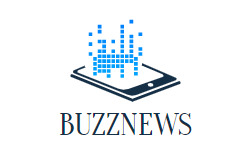
La variazione di un secondo nel tempo di viaggio di un gruppo di onde sismiche ci offre uno sguardo importante e senza precedenti su ciò che sta accadendo nelle profondità della Terra.
La teoria supporta la nostra comprensione della convezione nel nucleo esterno della Terra e la sua funzione nel controllare il campo magnetico del pianeta. Gli scienziati non hanno osservato direttamente i flussi convettivi o come potrebbero cambiare. Il geologo della Virginia Tech Ying Zhou fornisce le prove per la prima volta.
Un forte terremoto ha scosso la regione delle Isole Kermadec nel Pacifico meridionale nel maggio 1997. Poco più di 20 anni dopo, nel settembre 2018, un secondo grande terremoto ha colpito lo stesso luogo, con le sue onde di energia sismiche provenienti dalla stessa regione.
Sebbene due decenni di sismicità abbiano separato i terremoti, poiché si sono verificati nella stessa regione, ci si aspetterebbe che inviino onde sismiche attraverso gli strati terrestri alla stessa velocità, ha affermato Ying Zhou, geologo del Dipartimento di Scienze della Terra della Virginia Tech. Scienze.

Il percorso blu mostra un’onda sismica penetrante nel nucleo che si muove attraverso una regione del nucleo esterno, dove la velocità sismica è aumentata a causa della trasmissione di un flusso a bassa intensità nella regione. Credito: Ying Zhou della Virginia Tech
Tuttavia, nei dati registrati in quattro delle oltre 150 stazioni della rete sismica globale che registrano le vibrazioni sismiche in tempo reale, Zhou ha riscontrato anomalie sorprendenti tra gli eventi gemelli. Durante il terremoto del 2018, un gruppo di onde sismiche chiamate onde SKS si è spostato di circa un secondo più velocemente delle loro controparti del 1997.
Secondo Zhou, i cui risultati sono stati recentemente pubblicati in
Blue lines are seismic rays in the outer core, where core-penetrating seismic waves moved through that region faster in 2018 than in 1997. Credit: Image courtesy of Ying Zhou
Scientists also have only been able to speculate about the source of gradual changes in strength and direction of the magnetic field that have been observed, which likely involves changing flows in the outer core.
“If you look at the north geomagnetic pole, it’s currently moving at a speed of about 50 kilometers (31 miles) per year,” Zhou said. “It’s moving away from Canada and toward Siberia. The magnetic field is not the same every day. It’s changing. Since it’s changing, we also speculate that convection in the outer core is changing with time, but there’s no direct evidence. We’ve never seen it.”
Zhou set out to find that evidence. The changes happening in the outer core aren’t dramatic, she said, but they’re worth confirming and fundamentally understanding. In seismic waves and their changes in speed on a decade time scale, Zhou saw a means for “direct sampling” of the outer core. That’s because the SKS waves she studied pass right through it.
“SKS” represents three phases of the wave: First it goes through the mantle as an S wave, or shear wave; then into the outer core as a compressional wave; then back out through the mantle as an S wave. How fast these waves travel depend in part on the density of the outer core that’s in their path. If the density is lower in a region of the outer core as the wave penetrates it, the wave will travel faster, just as the anomalous SKS waves did in 2018.
“Something has changed along the path of that wave, so it can go faster now,” Zhou said.
To Zhou, the difference in wave speed points to low-density regions forming in the outer core in the 20 years since the 1997 earthquake. That higher SKS wave speed during the 2018 earthquake can be attributed to the release of light elements such as hydrogen, carbon, and oxygen in the outer core during convection that takes place as the Earth cools, she said.
“The material that was there 20 years ago is no longer there,” Zhou said. “This is new material, and it’s lighter. These light elements will move upward and change the density in the region where they’re located.”
To Zhou, it’s evidence that movement really is happening in the core, and it’s changing over time, as scientists have theorized. “We’re able to see it now,” she said. “If we’re able to see it from seismic waves, in the future, we could set up seismic stations and monitor that flow.”
What’s next
That’s Zhou’s next effort. Using a method of wave measurement known as interferometry, her team plans to analyze continuous seismic recordings from two seismic stations, one of which will serve as a “virtual” earthquake source, she said.
“We can use earthquakes, but the limitation of relying on earthquake data is that we can’t really control the locations of the earthquakes,” Zhou said. “But we can control the locations of seismic stations. We can put the stations anywhere we want them to be, with the wave path from one station to the other station going through the outer core. If we monitor that over time, then we can see how core-penetrating seismic waves between those two stations change. With that, we will be better able to see the movement of fluid in the outer core with time.”
Reference: “Transient variation in seismic wave speed points to fast fluid movement in the Earth’s outer core” by Ying Zhou, 25 April 2022, Communications Earth & Environment.
DOI: 10.1038/s43247-022-00432-7



